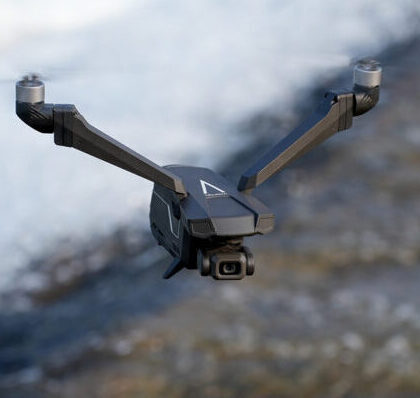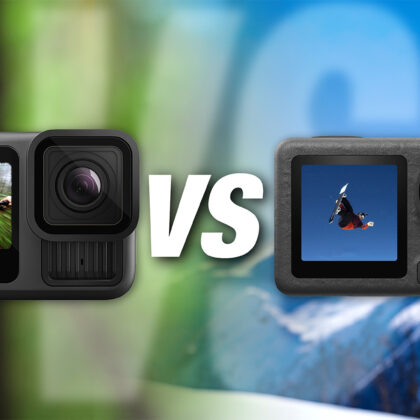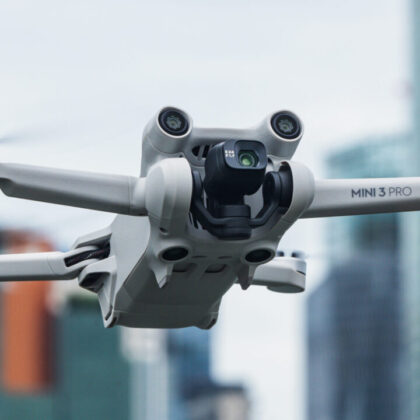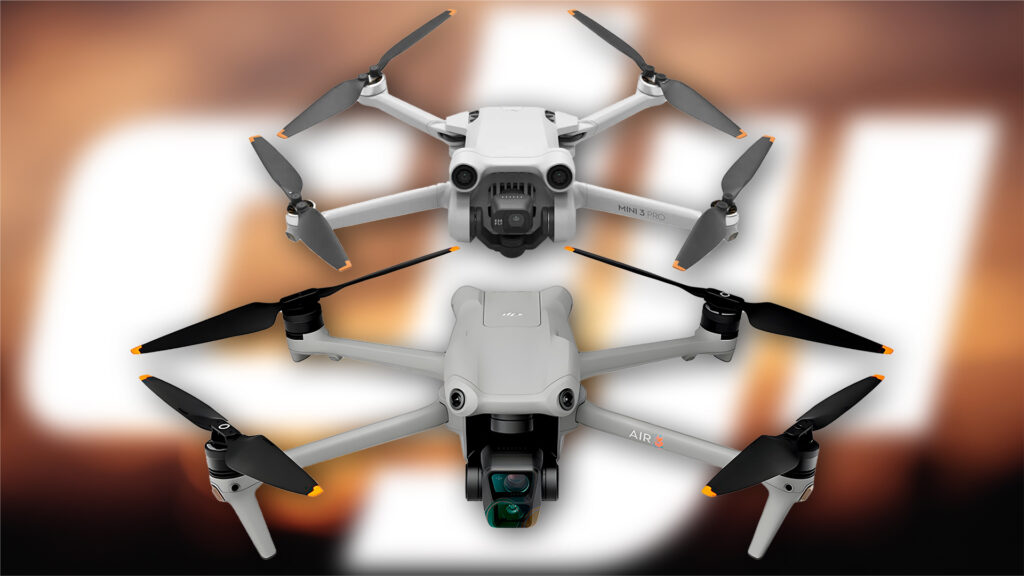
The Air 3 and Mini 3 Pro share a lot in common — the same camera sensor, similar flight time, and good portability — but they are also completely different drones with each offering its own distinct advantages over the other.
So with that in mind, let’s take a look at the DJI Air 3 vs DJI Mini 3 Pro to see how these two sub-$1500 drones stack up against each other.
(Despite the Air 3 having been released yet, almost all the specs are available through leaks online, so let’s take a look at how it stacks up against its smaller brother the Mini 3 Pro)
Camera(s) & Video/Photo Features
Alright so first off let’s start with the thing people care about the most: the camera.
The Mini 3 Pro (M3P) and Air 3 both utilize the same 1/1.3″ camera sensor (Omnivision OV48C) for 12mp/48mp photos and 4K video.
However, the Air 3 features a double camera design that places a second OV48C sensor behind a 70mm/2.8 lens for 3X optical zoom.
This allows for some flexibility with shooting and offers different framing options using more compression and parallax.
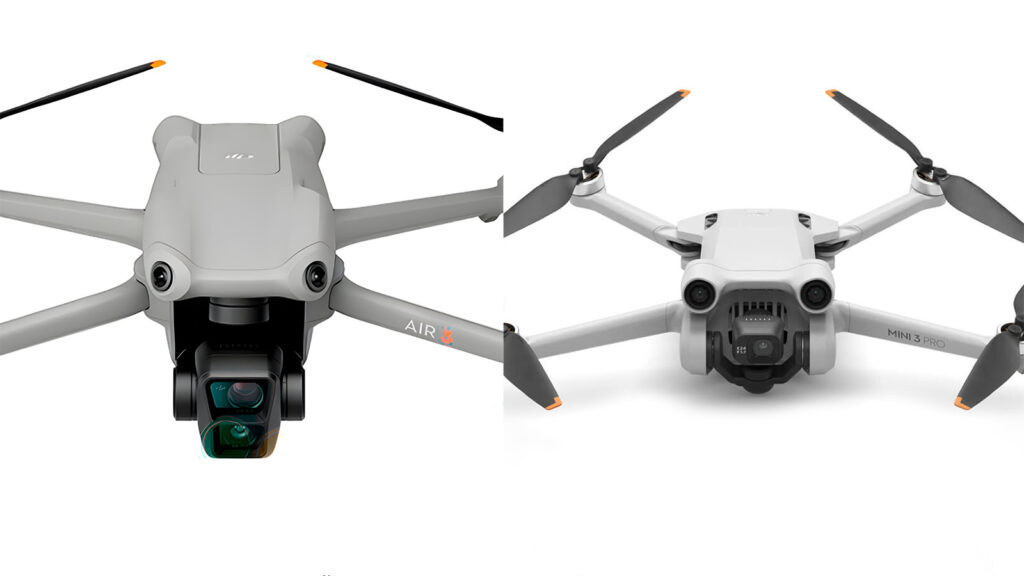
The M3P by contrast only has one camera but showcases a unique rotating gimbal design which allows users to shoot both horizontal and vertical video using the full FOV & sensor.
(The Air 3 has “vertical mode” though it is only achieved through digitally cropping the image and has a lower resolution of 2.7K)
Here’s a handy chart comparing the camera features of the Air 3 vs the Mini 3 Pro.
| DJI Air 3 | DJI Mini 3 Pro | |
| Main Camera | 24mm | f/1.7 | 24mm | f/1.7 |
| Secondary Camera | 70mm | f/2.8 | — |
| Photo Megapixels | 12MP & 48MP | 12MP & 48MP |
| Max Video Resolution & Frame Rate | 4K/100fps | 4K/60fps |
| Color Modes | D-Log M, HLG | D-Cinelike |
| Vertical Mode | 2.7K (Cropped) | 4K (Full FOV) |
Rounding out the camera features, the M3P does get 10bit color video with “Cinelike” color mode, however, that is blown away by the much more professional D-Log (LOG) & HLG (HDR) mode color options offered by the Air 3.
Drone Performance/Specs
Though the Air 3 may be newer, it can’t match the M3P on two things: its small size and incredible flight time using the extended batteries.
The Mini 3 Pro is nearly a third of the weight of the Air 3, coming in under 250g — a key number that lets it fly in many countries and places which have stricter laws for drones over 250g.
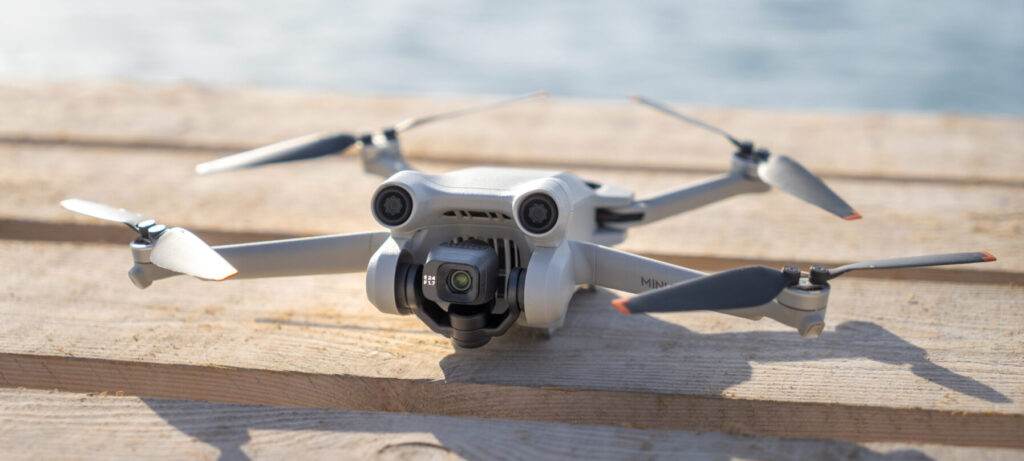
Also, using the extended batteries it can get 47min flight time (35min in real life) which is a minute longer than the advertised flight time of the Air 3 (however using the extended battery does make it heavier than 250gm).
That is about where it ends for the M3P though as the Air 3 offers better wind resistance, top speed, and avoidance/tracking features with closer to full 360° sensing to try and minimize crashes and updated software.
| DJI Air 3 | DJI Mini 3 Pro | |
| Weight | 720g | 249g |
| Flight Time | 46min | 34min & 47min (Extended Batteries) |
| Top Speed | 42.5mph (68kph) | 36mph (58kph) |
| Obstacle Avoidance | Full Avoidance (APAS 5.0) | Front/Rear/Bottom (APAS 4.0) |
| Battery Charge Time | 60min | 78min |
| Max Takeoff Elevation | 6000m | 4000m |
| Max Vertical Speed | 10m/s | 5m/s Up & 3m/s Down |
One thing you may notice if you look closely at the chart is the faster charging times of the Air 3’s batteries.
This is something DJI focused on a lot with this release as the Air 3 not only has faster-charging batteries but a new charging dock that can charge three batteries simultaneously rather than in sequence like all previous DJI chargers.
Better Control With Ocusync 4.0
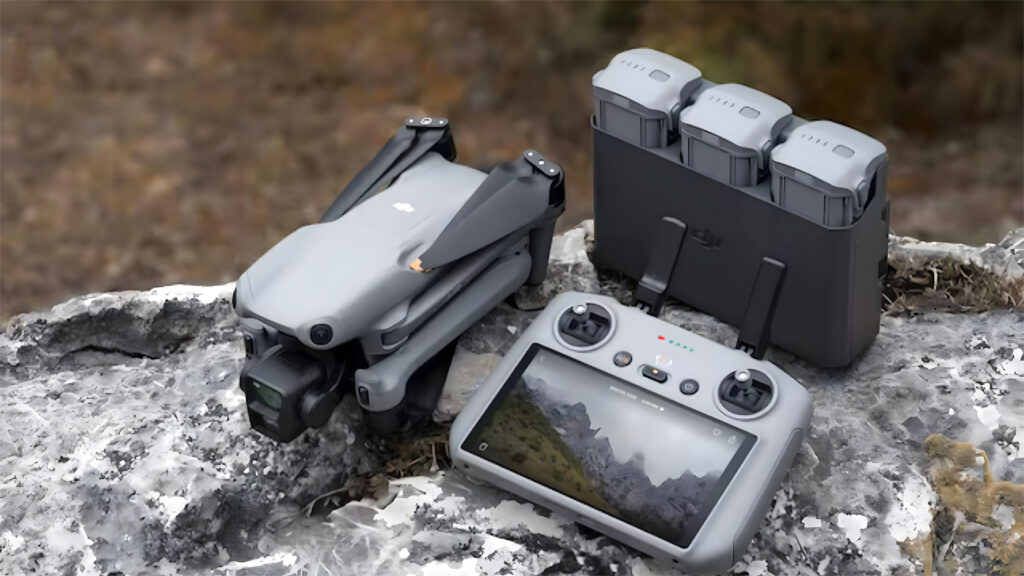
Possibly the biggest aspect of the Air 3 is the introduction of OcuSync 4.0.
The Mini 3 Pro along with even more expensive drones like the Mavic 3 Classic/Pro currently use OcuSync 3.0.
There is nothing wrong with OcuSync 3.0 — with the Mini 3 Pro DJI advertises a max range of 12km, though in reality, it’s much less.
The Air 3 on the other hand, has an advertised transmission range of 20km!
This is an amazing feat, and even if in reality it is often much less, the new O4 transmission system is strong enough to maintain a solid connection in even the most congested environments.
On top of this, the Air 3 also is the first drone to come with the new DJI RC-N2 or DJI RC2 controllers.
These new controllers are virtually identical to the old controllers but add OcuSync 4.0 and more antennas for better range while sacrificing some battery life.
| RC-N1 | RC-N2 | DJI-RC | DJI-RC2 | |
| Battery Life | 4 hours | 3.5 hours | 4 hours | 3 hours |
| Antennas | 2 antennas (1TX/1RX) | 4 antennas (2TX/2RX) | 2 antennas (1TX/1RX) | 4 antennas (2TX/2RX) |
| Memory | — | — | 8GB | 32GB |
Pricing
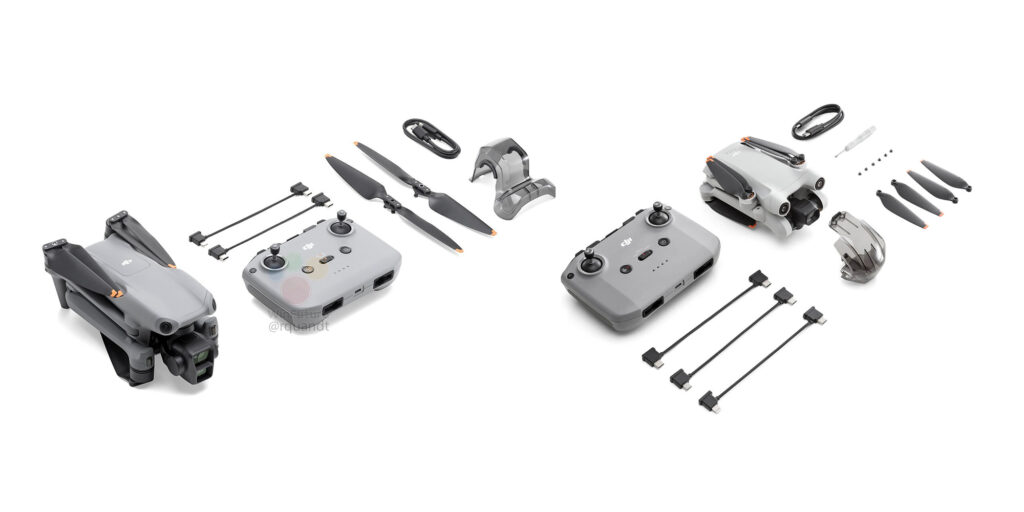
Currently the Mini 3 Pro is sitting about $450 cheaper than the Air 3 for both of the fly more combo options.
This is no small amount and translates to a nearly 50% price jump for someone considering the Air 3 N2 Combo over the comparable Mini 3 Pro combo.
| Air 3 | Mini 3 Pro | |
| RC-N1/N2 Combo | $1394 | $948 |
| DJI RC/RC2 Combo | $1594 | $1158 |
There is also a very likely chance we might see the Mini 3 Pro get more frequent price cuts on holidays and such, further widening the price gap between these two drones.
Air 3 vs Mini 3 Pro: Conclusion
Which drone is “better” very much depends on your needs.
Even though the Air 3 is the newer drone by one year if you need a drone that will allow you to fly in more places or avoid drone regulations in your country, then the Mini3 Pro is definitely the right choice for you.
The ability to easily pack the M3P and take it wherever you’re going is an awesome feature that is unmatched by any in the Mavic or Air series.
The M3P can also be considered the better drone for people on a bit more of a budget or looking for a drone to exclusively film vertical content with.
Now while the Air 3 is more expensive, drone pilots who’ve been flying for a few years and are looking for something a bit more professional (without spending over $2000 on a Mavic 3 Classic or Pro), the Air 3 is a good option.
The quicker charging times, additional zoom camera, HLG/D-Log M color profiles, and all-new OcuSync 4.0 transmission will help you capture better videos and photos while out flying.
If you’re also looking at the Mini 3 Pro vs the Air 2S I have a previous article on that.
Otherwise thanks for reading and hope this was helpful.
Feel free to tweet at me on Twitter or DM me on Instagram if you have any questions or corrections about the specs/features.
And as always, subscribe to Digital Tech Reviews & Tips on YouTube for my latest tech videos.

